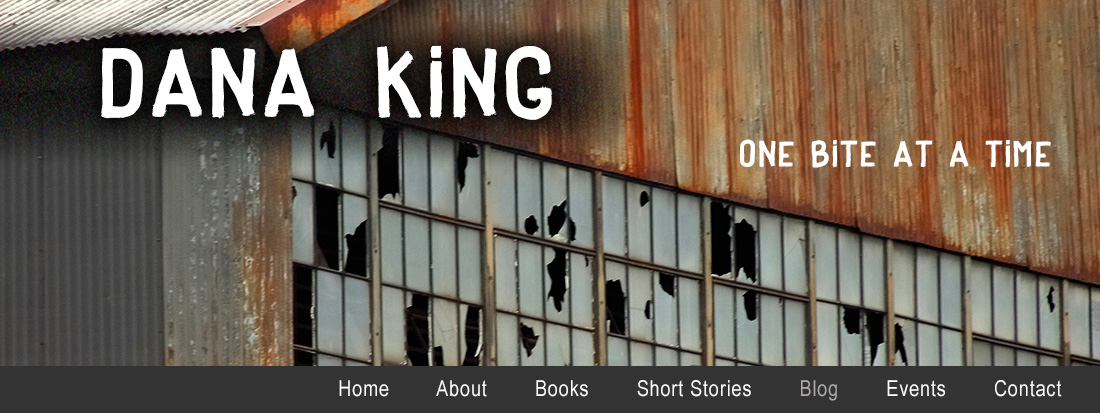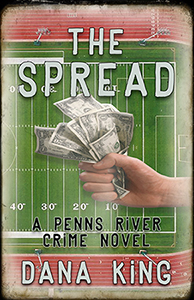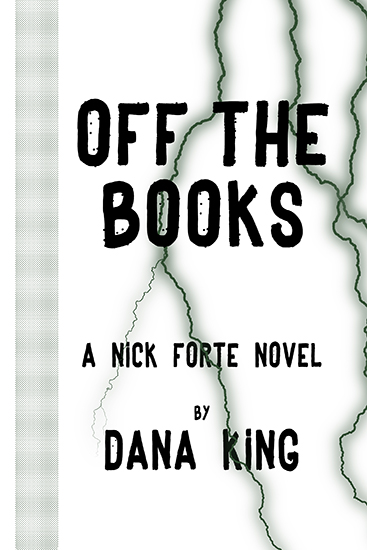Among
the myriad of cool things about the Creatures, Crime, and
Creativity conference is the ability to spend time with readers and writers
from outside one’s chosen niche. Crime, thrillers, science fiction, paranormal,
urban fantasy, erotica all got together to share their enthusiasm for their
chose genre(s). (Sorry if your got missed.) No one I came across had any issues
about being The Cool Kid, or working in The Cool Genre. Everyone had something worthwhile
to say, and everyone listened and learned.
 Over
the next several weeks OBAAT will feature writers I came across at C3. Today we
begin with Sharon Buchbinder, who, after working in health care delivery for
years, became an association executive, a health care researcher, and an
academic in higher education. She had it all--a terrific, supportive husband,
an amazing son and a wonderful job. But that itch to write (some call it an
obsession) kept beckoning her to "come on back" to writing fiction.
Thanks to the kindness of family, friends, critique partners, and beta readers,
she is published in contemporary, erotic, paranormal, and romantic suspense.
When not attempting to make students, colleagues, and babies laugh, she can be
found herding cats, waiting on a large gray dog, fishing, dining with good
friends, or writing. You can find her at www.sharonbuchbinder.com
Over
the next several weeks OBAAT will feature writers I came across at C3. Today we
begin with Sharon Buchbinder, who, after working in health care delivery for
years, became an association executive, a health care researcher, and an
academic in higher education. She had it all--a terrific, supportive husband,
an amazing son and a wonderful job. But that itch to write (some call it an
obsession) kept beckoning her to "come on back" to writing fiction.
Thanks to the kindness of family, friends, critique partners, and beta readers,
she is published in contemporary, erotic, paranormal, and romantic suspense.
When not attempting to make students, colleagues, and babies laugh, she can be
found herding cats, waiting on a large gray dog, fishing, dining with good
friends, or writing. You can find her at www.sharonbuchbinder.com
One Bite at a Time: Tell us about Some Other Child.
Sharon Buchbinder: Between the
responsibility for the care of her injured mother and straightening out her
muddled finances, public health researcher Sarah Wright hasn't a minute to
herself, much less time to repair a fractured romance. After a much loved aunt
goes missing, Sarah is convinced it's a kidnapping but the police refuse to
investigate. Former fiancé Dan flies to Sarah's side to help—and it looks like
things might come back together for the two of them—until Sarah is arrested for
her aunt's murder. As evidence stacks up against her, Sarah must find the real
culprits as well as unravel decades old family secrets along the way.
OBAAT: Where did you get
this idea, and what made it worth developing for you? (Notice I didn’t ask
“Where do you get your ideas?” I was careful to ask where you got this idea.)
SB: At the time I went
back to my first love (writing fiction), Baltimore had the dubious distinction
of being number one in the US for congenital syphilis. I used this fact as the
nucleus of the story. Drawing on my family of origin for the heroine's back
story, I placed the tale in Baltimore using many famous landmarks and
institutions as settings for the mystery and suspense.
OBAAT: How long did it
take to write Some Other Child, start
to finish?
SB: I wrote the first draft between 2004 and 2005.
The book's gestation period exceeded that of an elephant. It took almost ten
years with repeated rewrites and umpteen revisions.
OBAAT: What’s the back
story on the main character or characters?
SB: Sarah Wright
sacrifices her romance to be a "good daughter." She devotes her life
to her work as a pediatric researcher and taking care of her alcoholic mother.
Her next door neighbor, "Aunt" Ida Katz, is her mother's best friend
and polar opposite. Neither her mother nor Ida will ever discuss how they met.
When Sarah arrives home from work one winter day, she is confronted by police
cars and ambulances. Her mother, who had been on the wagon, went outside in a
drunken stupor and fell on the ice. She is hypothermic and near death. Sarah is
devastated. Just when it looks like things can't get much worse, Aunt Ida vanishes.
The police won't put out a missing person alert because Ida is competent. Sarah
knows something is terribly wrong and starts her own investigation. Just a hint:
things get much worse for Sarah before they get better.
OBAAT: In what time and
place is Some Other Child set? How
important is the setting to the book as a whole?
 SB: The book is set in
contemporary times in Baltimore and its suburbs. The city is an interesting mix
of cultures and ethnicities, which gives it great charm and fascinating
characters. Although I changed the names
of a number of places in the book, local readers love recognizing their
favorite haunts. The academic medical center is intrinsic to the plot lines and
ability of the main character to conduct her amateur sleuthing
SB: The book is set in
contemporary times in Baltimore and its suburbs. The city is an interesting mix
of cultures and ethnicities, which gives it great charm and fascinating
characters. Although I changed the names
of a number of places in the book, local readers love recognizing their
favorite haunts. The academic medical center is intrinsic to the plot lines and
ability of the main character to conduct her amateur sleuthing
OBAAT: How did Some Other Child come to be published?
SB: After I wrote the
book, Some Other Child was beta read
by my family, friends, colleague, and even a professor of literature. Based on
their input, I revised the book. Then I tried to get it published. No luck. So,
I hired a professional editor, who gave me great feedback, including the fact
that the book was in the wrong point of view (first person). I revised the
book, again. Between revisions, I found Romance Writers of America and Maryland
Romance Writers. I discovered the romance genre had a large umbrella that
covered many subgenres. I put my firstborn book aside, despite many readers
telling me I needed to get it published. I plunged into romance, writing and
selling seven short stories and novellas. I pulled Some Other Child out of the drawer, added more romance, and began
re-submitting to romance publishers. After the third rejection, I decided to
self-publish. As you can well imagine,
it was enormously gratifying to receive the Paranormal Romance Guild Best Mystery/Thriller Award for 2012. After I self-published (and
received the award) one of the editors at The Wild Rose Press who worked with
me on my short stories and novellas reached out to me and asked me to submit
the manuscript. And she bought the book! Happy dance!
OBAAT: What kinds of
stories do you like to read? Who are your favorite authors, in or out of that
area?
SB: Genre fiction,
including historical, mystery, suspense, thrillers, supernatural, paranormal romance,
romantic suspense, sci-fi, and fantasy. My desert island books are The Eight by Katherine Neville and Pillars of the Earth by Ken Follett. A very
short list of my favorite authors include: Bradbury, Heinlein, Asimov, Connie
Willis, Ken Follett, F Paul Wilson, JD Robb (Nora Roberts), Elizabeth
Cunningham, Lucia St Clair Robson, to mention but a few.
OBAAT: Who are your
greatest influences?
SB: Nancy Drew! She got
me hooked on girl-driven stories. Heinlein opened doors to other worlds,
literally. Neville showed me how to write a book in two different eras and wrap
the two plots together. She is also, by the way, incredibly kind and gracious
to fan girls.
OBAAT: Do you outline or
fly by the seat of you pants? Do you even wear pants when you write?
SB: My pants are always
seated firmly in a framework that used to be loose, but gets tighter with each
subsequent story. Part of the reason Some
Other Child took so long to be born is because I wrote it as a pantser. Now
that I'm working on my fourth novel, I'm thrilled to have a road map that gives
me direction, but allows for scenic detours.
OBAAT: Give us an idea of your
process. Do you edit as you go? Throw anything into a first draft knowing the
hard work is in the revisions? Something in between?
SB: Something in
between. In a writing frenzy, I will move forward as fast as I can. I let that
chunk "cool" then review it later. Then the warts come out. Revise,
rewrite, set on fire. Or, on rare occasion, "Did I write that?" Beta
readers are incredibly important to me. They tell me what works and doesn't
work. Then revise, rewrite, or burn.
OBAAT: If you could give a
novice writer a single piece of advice, what would it be?
SB: Read the genre you want to write so
you know the rules--then make it your own voice, not the voice of the author
you love. It's your story. Not his or
hers.
OBAAT: Favorite activity
when you’re not reading or writing.
SB: Playing with my
grandson.
OBAAT: Which do you take
to bed at night, the money earned or the good review?
SB: Good reviews. I live
for good feedback.
OBAAT: Would you stop
writing if someone paid you enough money so you’d never have to work again, on
the condition you could also never write again?
SB: No. It's an
obsession. I can't stop.
OBAAT: If you were just
starting out, which would you prefer: 1. Form your own indie publishing house
and put your work out in paper and e-book yourself? 2. Go with a small or
medium traditional house that offers very little or no advance, a royalty that
is only a fraction of what you'd get on your own, and also makes no promise of
any type of publicity push, keeping in mind that you also will lose the
publishing rights for a period, sometimes indefinitely? 3. Go with a Big Six or
legacy publisher that offers a larger advance, legitimate review possibilities,
entrance to industry literary awards, and exposure on the shelves of brick and
mortar stores. Pick one and say why.
SB: I've done all except
number 3, so I'd like to rewind and try that for a change. Big Six, no matter
what the dynamics of the publishing industry, is still the Ivy League or Major
League or whatever metaphor you choose. It is a stamp of recognition that few
other publishing venues offer.
OBAAT: Beer, mixed drinks,
or hard liquor?
SB: Wine.
OBAAT: Baseball or
football?
SB: The Ravens.
OBAAT: What question have
you always wanted an interviewer to ask, but they never do?
SB: How did it feel to sell your first book?
OBAAT: What’s the answer?
SB: VALIDATING.
OBAAT: What are you
working on now?
SB: Kiss of the Burmese Prince, third in my Kiss Series (Kiss of the Silver Wolf, Kiss of the Virgin Queen). Kiss of the Burmese Prince is the story about
a jinni hunter retracing her "crazy" grandmother's bedtime stories
about her journey into the Jinni Realm during World War II in the
China-Burma-India theatre. The jinni hunter follows her grandmother's journal
and discovers the truth of her own origins and finds love along the way.
Thanks,
Sharon, for taking the time to let OBAAT readers have a look at writing other
than the usual here. I’ll be appearing on Sharon’s blog, Snap, Crackle, and Popping, on
December 30.




No comments:
Post a Comment